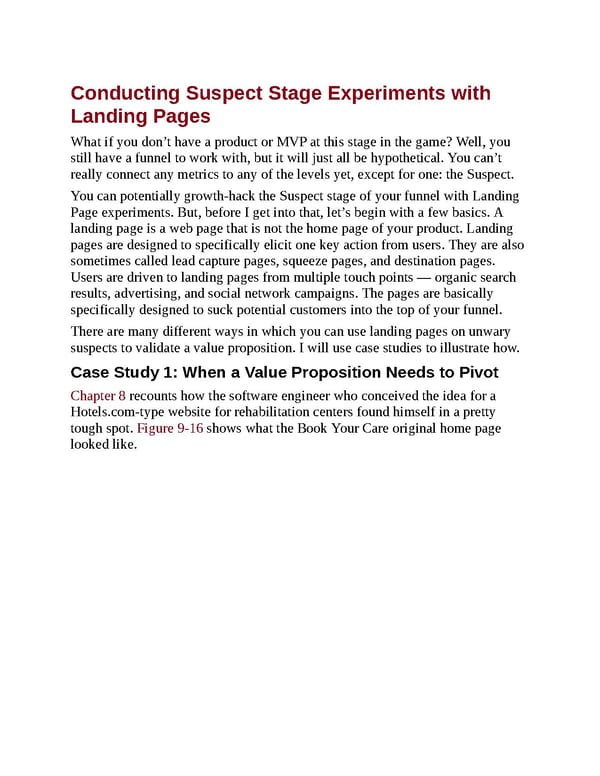Conducting Suspect Stage Experiments with Landing Pages What if you don’t have a product or MVP at this stage in the game? Well, you still have a funnel to work with, but it will just all be hypothetical. You can’t really connect any metrics to any of the levels yet, except for one: the Suspect. You can potentially growth-hack the Suspect stage of your funnel with Landing Page experiments. But, before I get into that, let’s begin with a few basics. A landing page is a web page that is not the home page of your product. Landing pages are designed to specifically elicit one key action from users. They are also sometimes called lead capture pages, squeeze pages, and destination pages. Users are driven to landing pages from multiple touch points — organic search results, advertising, and social network campaigns. The pages are basically specifically designed to suck potential customers into the top of your funnel. There are many different ways in which you can use landing pages on unwary suspects to validate a value proposition. I will use case studies to illustrate how. Case Study 1: When a Value Proposition Needs to Pivot Chapter 8 recounts how the software engineer who conceived the idea for a Hotels.com-type website for rehabilitation centers found himself in a pretty tough spot. Figure 9-16 shows what the Book Your Care original home page looked like.
 UX Strategy: How to Devise Innovative Digital Products that People Want Page 264 Page 266
UX Strategy: How to Devise Innovative Digital Products that People Want Page 264 Page 266